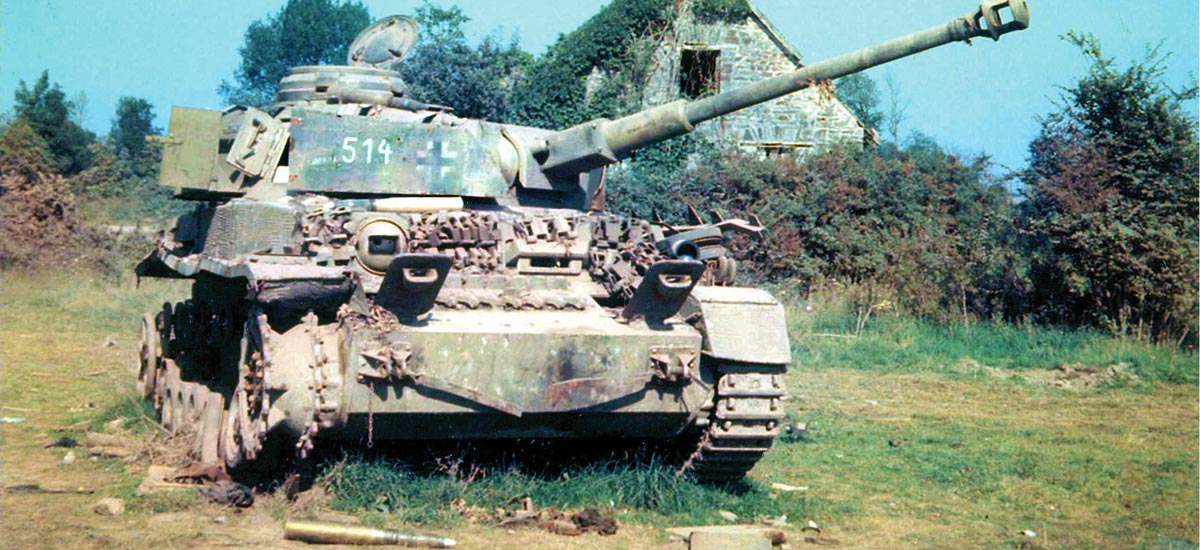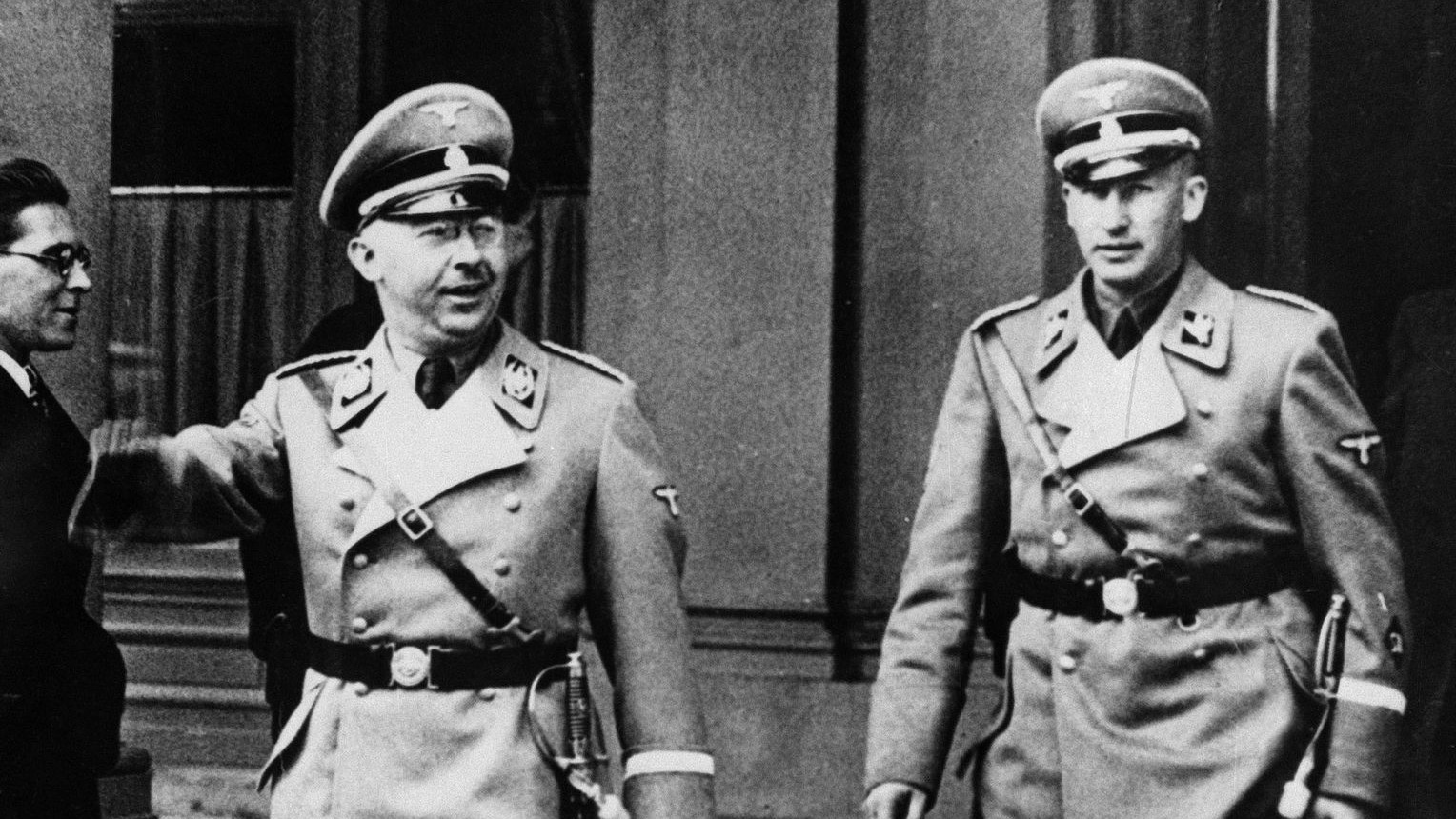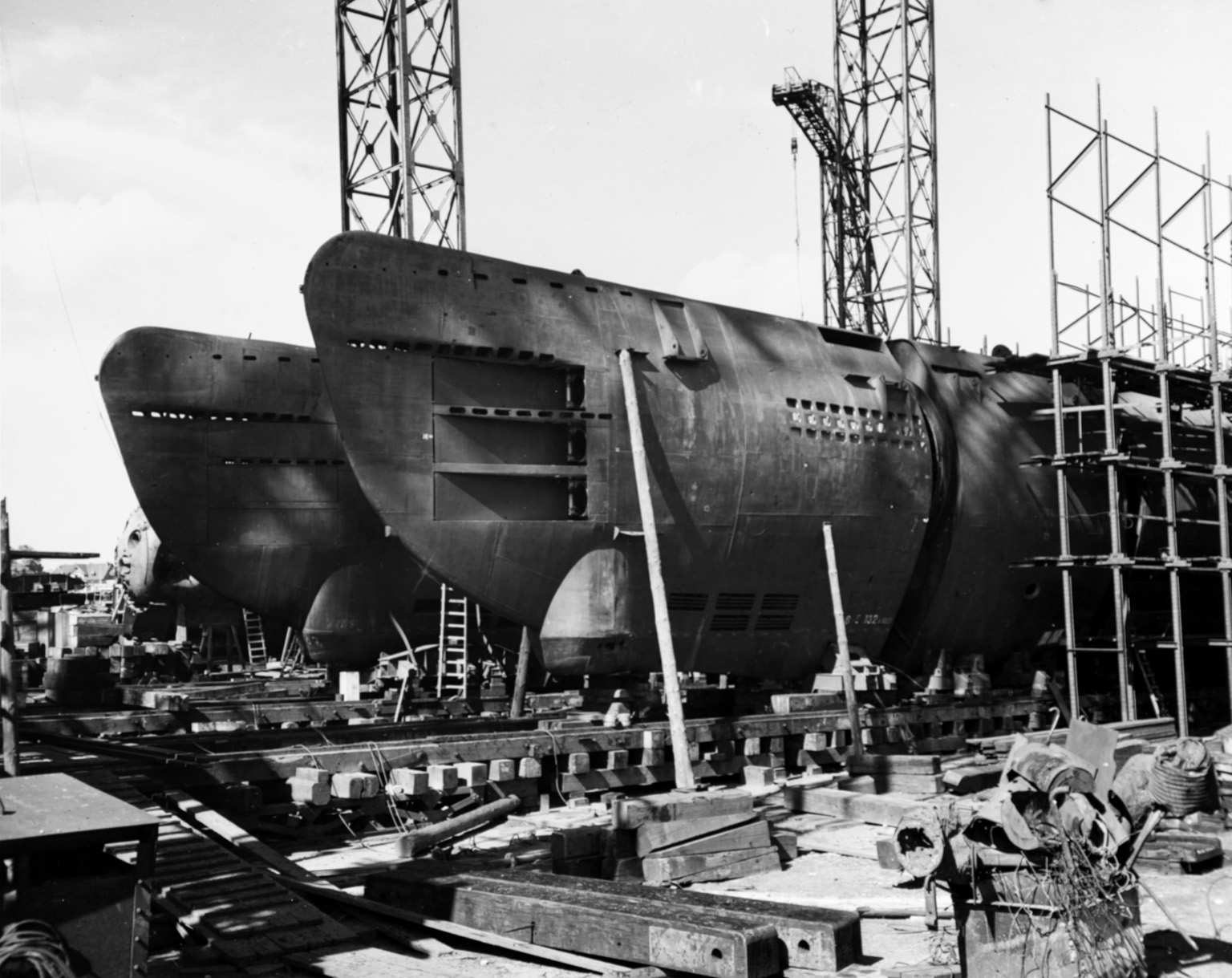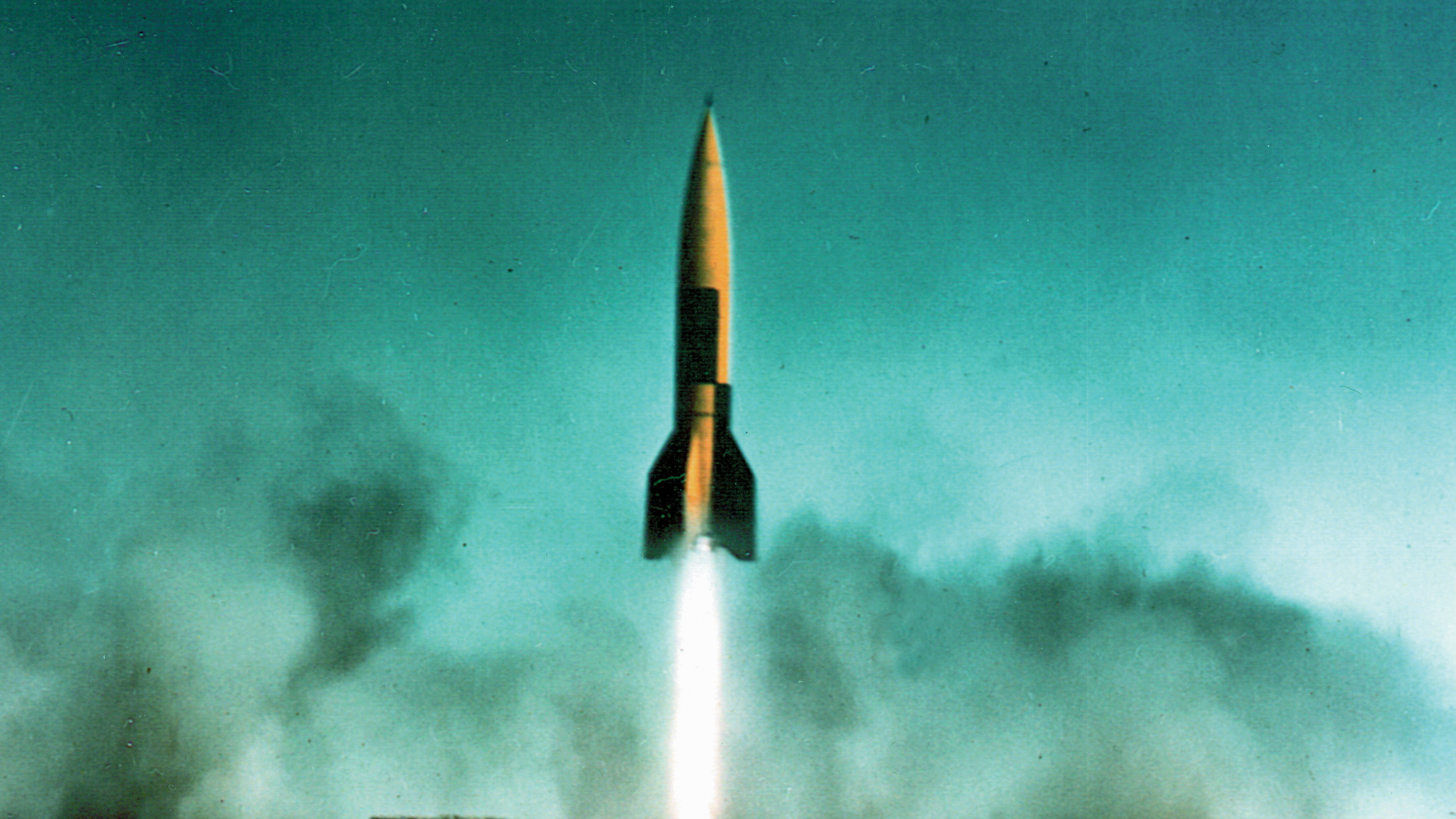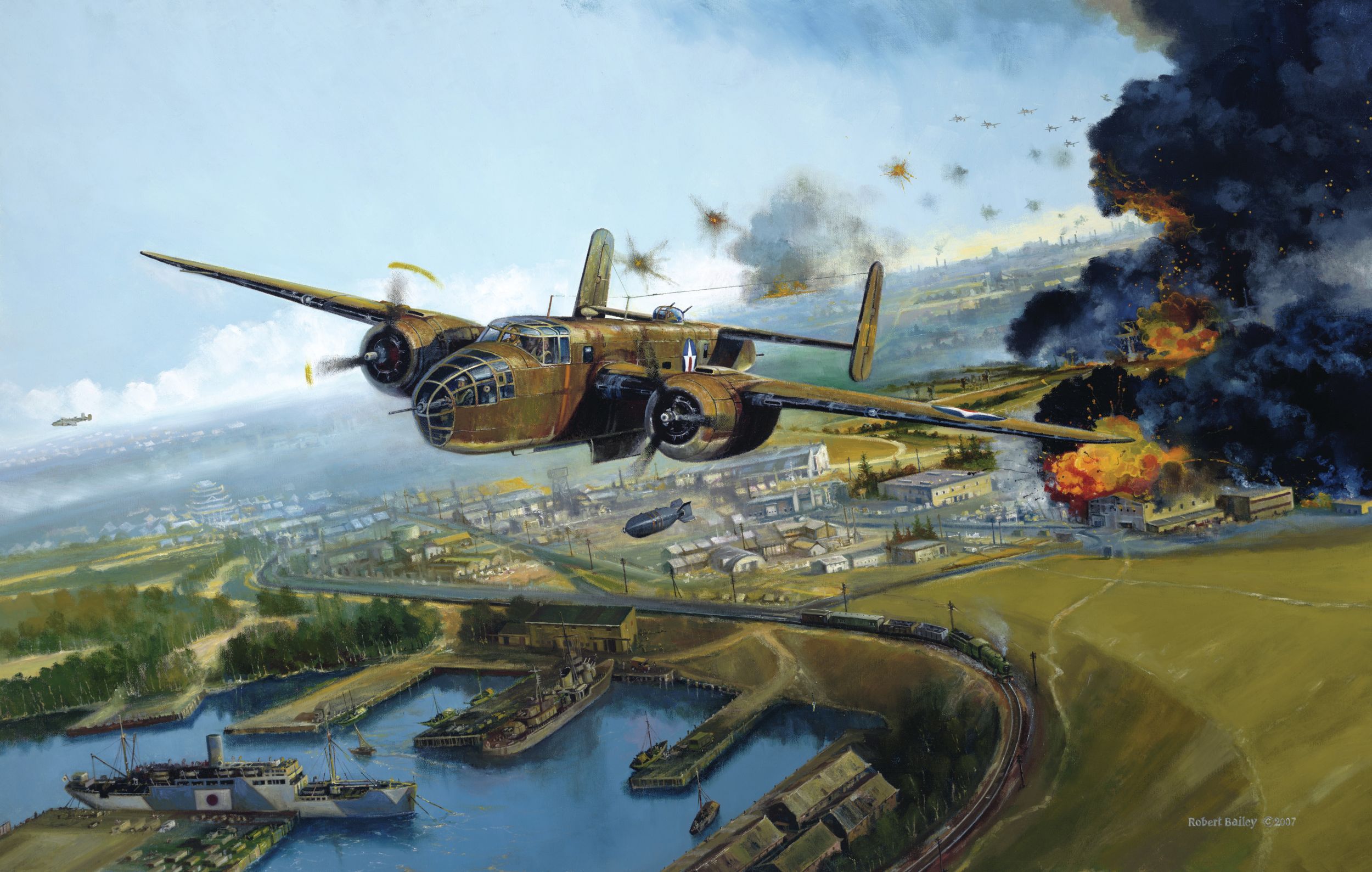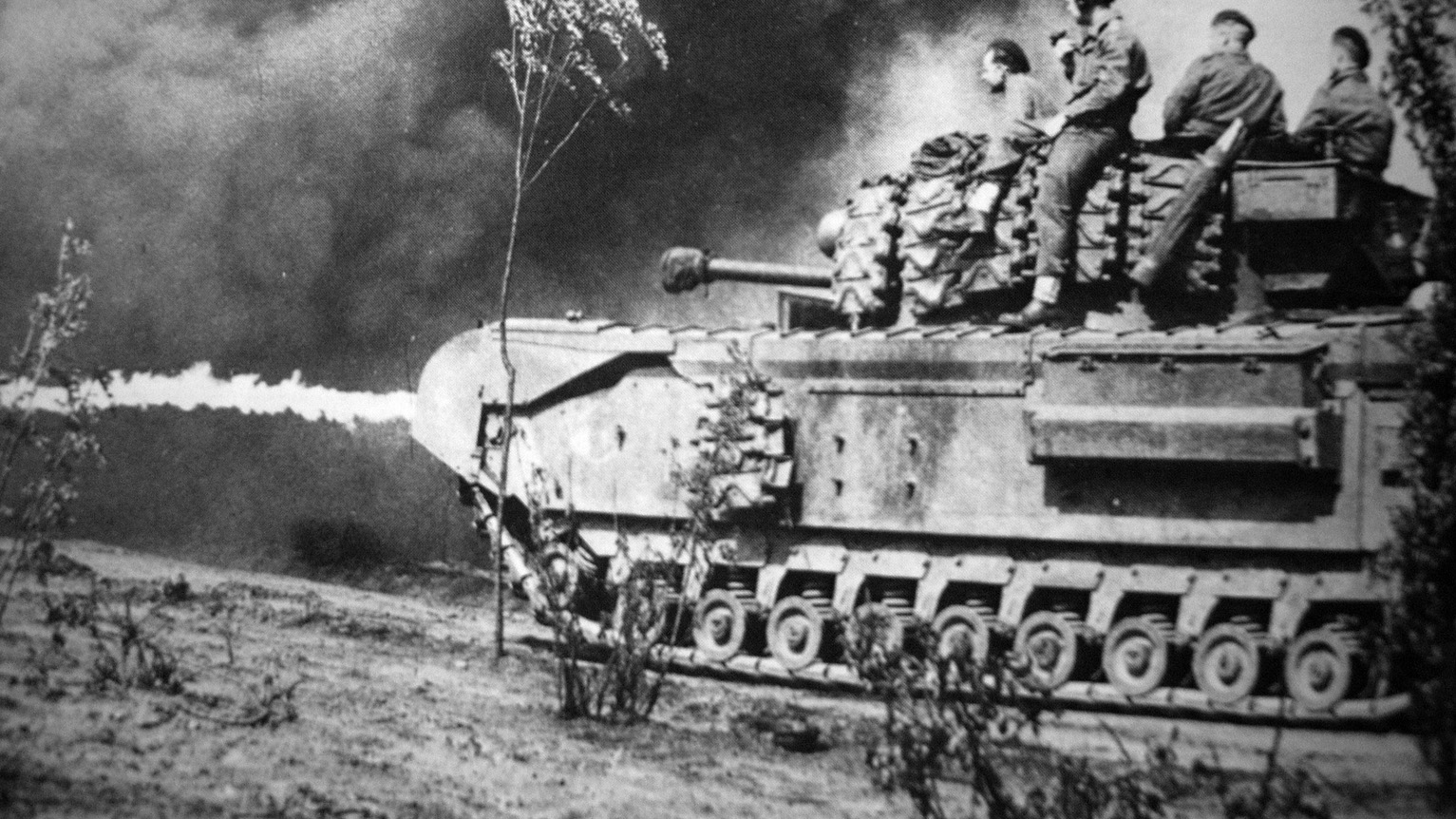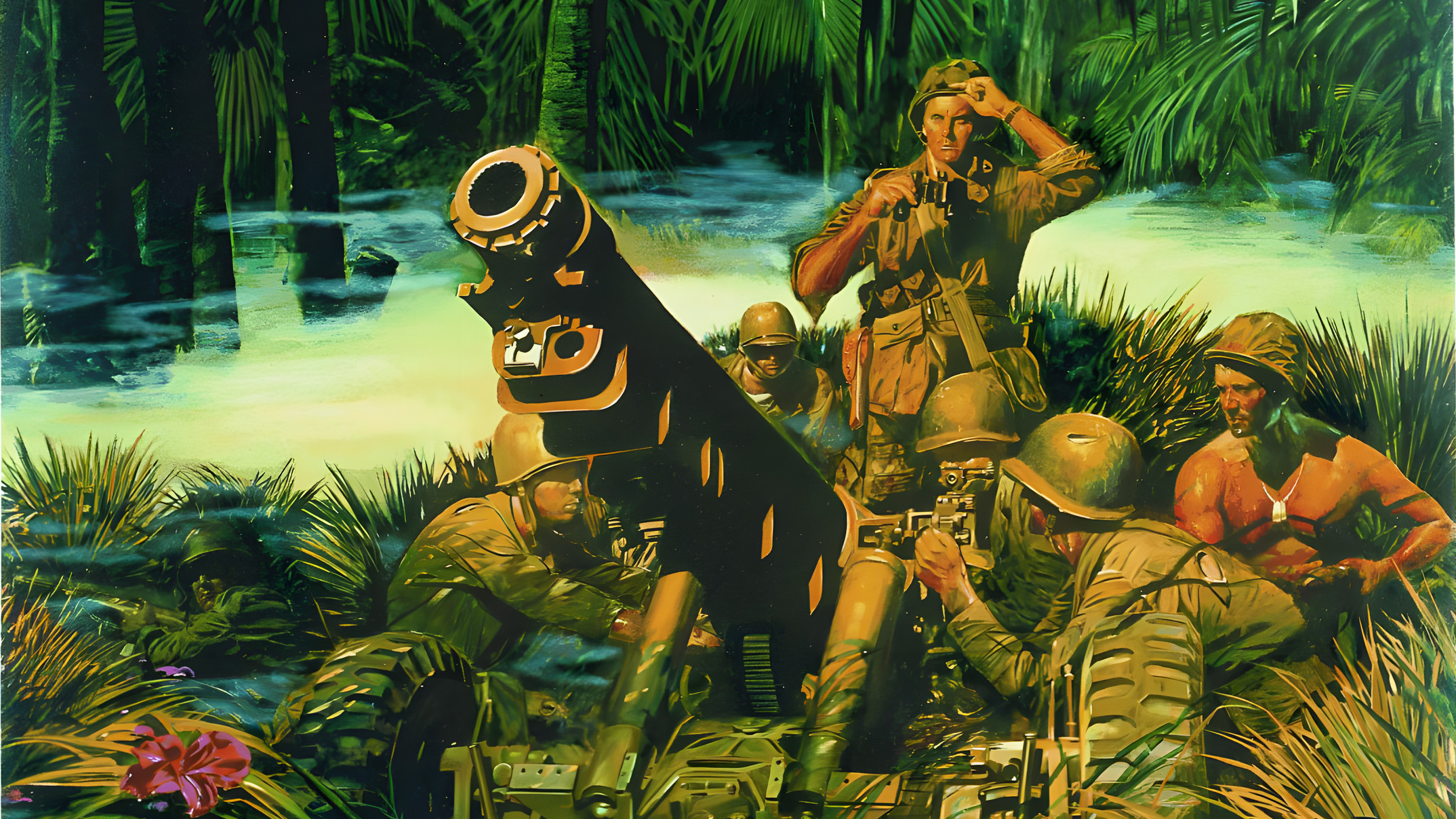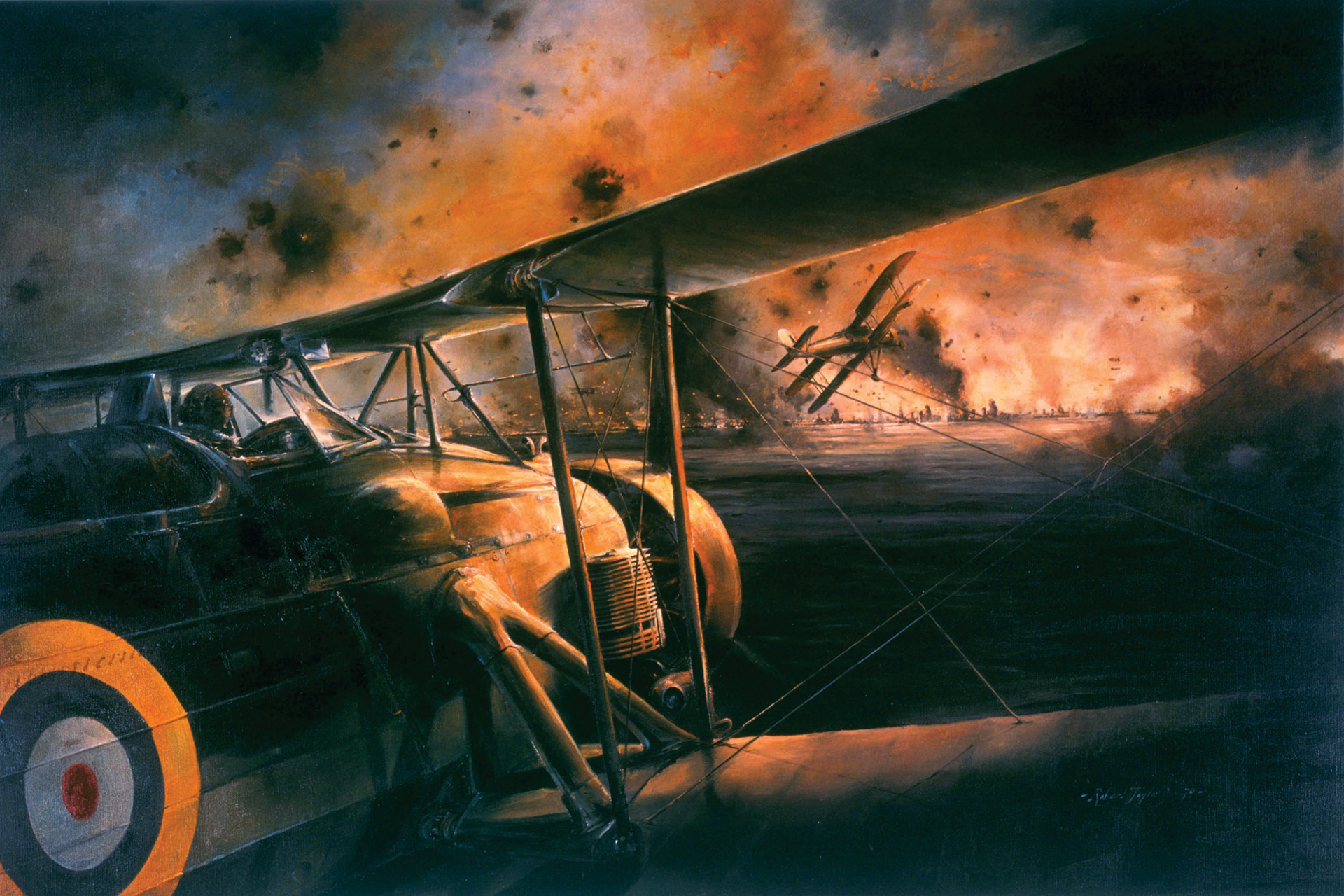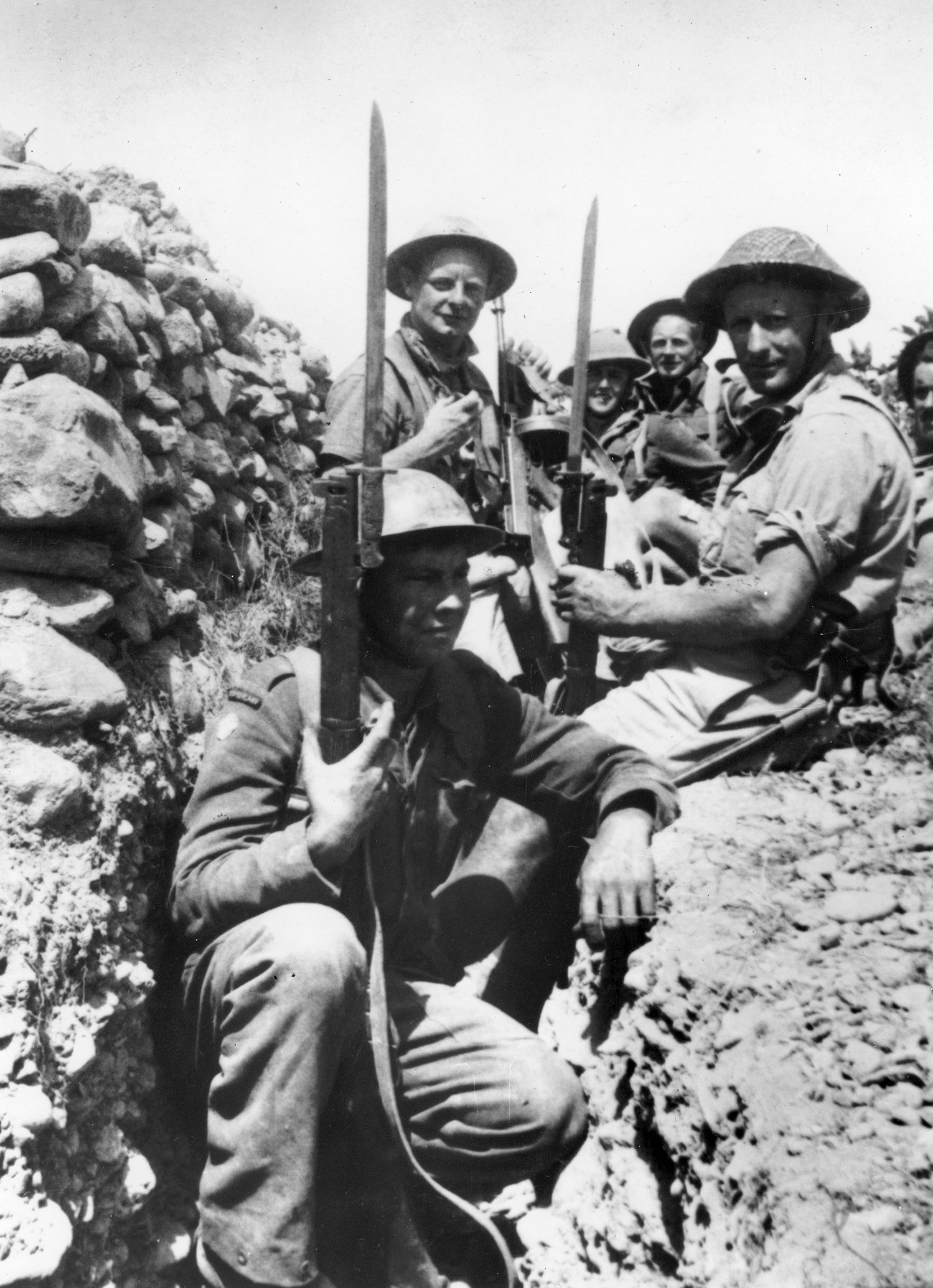By Arnold Blumberg
On December 10, 1944, Generalleutnant (equivalent to major general in the U.S. Army during World War II) Fritz Bayerlein was called to a meeting at Kyllburg (Eifel) to participate in a map exercise involving an advance to the Meuse River.
Among the German Army officers present was General der Panzertruppen (i.e., lieutenant general) Hasso von Manteuffel, commander of the Fifth Panzer Army, and several tank corps leaders. Bayerlein, commanding the Panzer Lehr Division, was specifically asked if he could take the Belgian crossroads town of Bastogne, to which he replied that unless the place could be captured by surprise “otherwise only a heavily prepared attack could take it.”
It was apparent to the tank leader that a German offensive in the West was in the offing, but where and when it would take place he did not know. The answers to those questions came two days later.
December 12 witnessed a summons for Bayerlein to appear at the Wehrmacht high command’s headquarters in the West located at Ziegenberg. There he found assembled all the German army, corps, and division commanders serving on the Western Front. A half-hour bus ride brought the entire group to the field headquarters in the West of, and face-to-face with, their supreme leader: Adolf Hitler.
The Nazi dictator harangued his generals with a two-hour prepared speech, ending with the declaration that in a few days the German Army would launch a massive counterattack in the West. The Führer explained that he had managed to scrape together everything he could—25 divisions containing 250,000 men and 800 armored fighting vehicles—for the effort, and if it did not succeed, the war would be lost.
Warming to his subject, Hitler said that the German Sixth Panzer Army would capture Liege, Belgium, while to its immediate south Manteuffel’s Fifth Panzer Army would take the port city of Antwerp. A third German army—the Seventh under General der Panzertruppen Erich Brandenberger—was tasked with guarding the southern flank of the German offensive.
With Antwerp, the main entry point for Allied supplies into northwestern Europe, in German hands, Hitler exclaimed, the Americans, English, and French would be forced to make an immediate negotiated peace with the Reich.
Along with the vast majority of officers at the meeting, Bayerlein seriously doubted the concept and the new German offensive, as well as its ability to achieve any positive military results. Leaving the Führer’s headquarters, he stopped at the city of Würzburg to visit his family, suspecting it would be the last time he would ever see them.
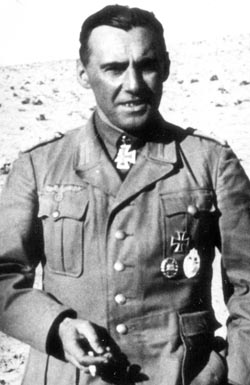
Regardless, Bayerlein remarked to members of his staff that he would do all in his power to have his unit ready for the coming operation, expressing confidence that his “boys” would perform with determination and courage regardless of the harsh weather conditions, lack of friendly air support, fuel, transport, and weapons that currently plagued his division.
Bayerlein was right in the high regard he held for his current command; it had been created as an elite tank formation to be employed as an armored mobile strike force against the Western Allies when they invaded the shores of France.
Just as Bayerlein held his new command in high regard, the men of Panzer Lehr viewed their leader with great esteem. Born January 14, 1899, in the Bavarian city of Würzburg, Fritz Hermann Michael Bayerlein was one of three children of a lower middle-class family with no prior military tradition.
Before to the start of World War I in August 1914, Fritz had been a student pursuing a career as a teacher of geography and history. The Great War interrupted his scholastic plans when he was drafted into the German Army in June 1917 as a private and a Fahnenjunker (officer candidate). Fritz was the second member of his immediate family to serve in the Army; his older brother, Leutnant Richard Josef Bayerlein, had been drafted the year before and had died on the Western Front in May 1918.
By August 1918, Fritz was serving in a machine-gun squad in France, even commanding it at times. That same month he was wounded by grenade fragments, sent home on sick leave, and the next month, for his exemplary conduct in battle, made Fahnenjunker-Unteroffizier (a noncommissioned officer).
The war ended, but in 1919, Bayerlein was sworn into a much-reduced German Army, and in 1922 he was promoted to second lieutenant. Seven years later, Bayerlein, now a first lieutenant, was assigned as an instructor at the Army Infantry School, where he met Hauptmann (captain) Erwin Rommel.
Fritz Bayerlein was made captain in 1934 and then major four years later. During the German invasion of Poland in 1939, Bayerlein served as the operations officer of the 10th Panzer Division. The war against France in 1940 saw Bayerlein on the staff of General Heinz Guderian’s XIX Panzer Corps. When Hitler’s armies marched into the Soviet Union in June 1941, Oberstleutnant (lieutenant colonel) Bayerlein was the operations officer on Guderian’s 2nd Panzer Group staff.
In early October 1941, Bayerlein was transferred to North Africa and fought with Rommel’s Afrika Korps, where he became a full colonel and in June 1942 the latter’s chief of staff. Numerous times between that date and when it surrendered in Tunisia in 1943, Bayerlein commanded the Afrika Korps. In May 1943, he was ordered back to Germany for medical reasons.
Between the fall of 1943 and the winter of 1944, now Maj. Gen. Bayerlein commanded the prestigious 3rd Panzer Division against the Russians, but the war on the Eastern Front was going badly for the Germans. During mid-January 1944, he was removed from the Eastern Front to organize and train the Panzer Lehr Division.
The new armored outfit, officially listed on the German Army’s order of battle as the Panzer Lehr Division 130, came into being as a result of Führer Directive #51, issued just before Christmas 1943.
At a January 26, 1944, meeting between General Oberst (colonel general) Guderian, Inspector General of the German Army’s armored forces and then Generalmajor (brigadier general) Fritz Bayerlein, Guderian informed his subordinate that the new tank formation in question was to be activated specifically to meet the expected Allied invasion in the West and that Bayerlein had been picked to head it because of his experience in fighting the Americans and British in North Africa.
Bayerlein recalled that Guderian emphasized, “With this division alone, you must throw the Allies back into the sea. Your objective is the coast—no, not the coast, it is the sea.”
In January 1944, the various German tank training school and demonstration units (i.e., Lehrtruppen) that were to make up Panzer Lehr gathered for initial training and activation of the unit in northeastern France, the various elements being quartered near the cities of Nancy, Verdun, and Toul.
However, as the division commenced its training it was alerted for a movement to the south of France where the Wehrmacht’s high command feared an imminent Allied amphibious assault from the Mediterranean Sea. As it turned out, the division was ordered to Hungary in early March 1944 to prevent that German ally from exiting the war.
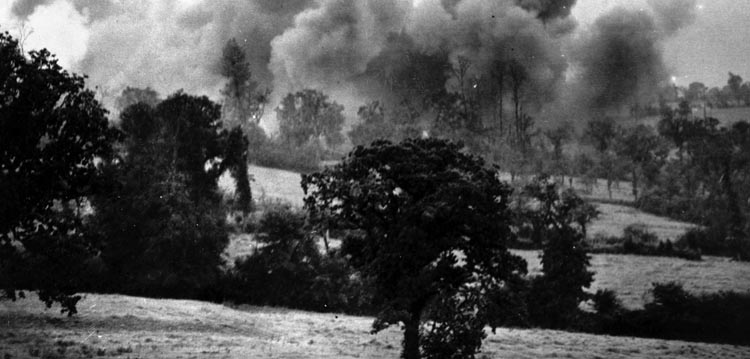
After six weeks in Hungary, where the division did not engage in combat, Panzer Lehr was moved back to France and stationed west of Paris. Training continued, and the infusion of men and material saw the unit by June 1944 reach 14,634 officers and men. Sixty percent of them were veterans of the Eastern Front and/or North Africa. Many later served as tank instructors in Germany, training new German tank crews in the use and maintenance of armored vehicles as well as tank combat tactics. The remaining 40 percent of the personnel were young men age 18, and fully trained. The average age for the entire division was only 21½ years.
The combat formations of Panzer Lehr included a tank regiment consisting of one battalion of 79 Mk. V Panthers and one battalion of 103 Mk. IV tanks; four panzergrenadier battalions split between two regiments all carried in 674 armored half-tracks; an armored reconnaissance battalion; 42 field howitzers ranging from 105 to 155mm guns; 18 88mm flak guns; and a self-propelled tank destroyer (panzerjäger) battalion numbering 31 weapons.
These units containing 8,000 combat troops were supported by 5,000 supply and support services personnel who made the division the best German armored unit in the Wehrmacht, with a robust offensive and defensive capability.
Within hours of the launch of Operation Overlord, the Allied invasion of the European continent on June 6, 1944, Panzer Lehr underwent its baptism of fire, followed by months engulfed in the crucible of battle including the struggle in the bocage country of Normandy, the retreat across France to the German border defenses referred to as the West Wall, and the fighting in the Lorraine region of northeastern France.
Ordered on June 6 to move 100 miles from its assembly area around the city of Chartres to Caen, the division was on that day and the next attacked by Allied airpower as it rolled north to Normandy. The enemy’s assaults from the sky were relentless, and divisional losses in men and material—including 84 half-tracks and self-propelled guns, five tanks, and 130 trucks—were so severe that the Germans dubbed the route of Panzer Lehr’s march “Jabo Rennstrecke,” or the “fighter-bomber racecourse.” As bad as the initial losses suffered by Panzer Lehr were during the opening stages of the fight for Normandy, the following months of combat would be even worse.
Placed under SS General Joseph “Sepp” Dietrich’s 1st SS Panzer Corps, Bayerlein’s men were positioned in the Seulles Valley west of Caen, facing the British and Canadians. Throughout June 1944, the division and the other units making up the 1st SS Corps repelled repeated English assaults but at a terrible cost. Then, in early July, the command was moved to the St. Lô area, where it faced the American First Army.
July 25 witnessed the opening of Operation Cobra—the American attempt to break out of Normandy and strike into the heart of France. Following an aerial bombardment involving 1,500 heavy bombers from the U.S. Eighth Air Force, preceded by waves of Ninth Air Force fighter-bombers, the American ground attack began.
Dug in along the target area near the town of St. Lô was Panzer Lehr, now at only half its original strength. Bayerlein described the bombing as “hell…. The fields were burning and smoldering. My frontlines looked like a landscape on the moon, and at least 70 percent of my personnel were out of action.”
The next day Field Marshal Günther von Kluge, commander of Army Group B, ordered Bayerlein to hold his position at all costs. No man was to leave his position, Bayerlein was told. The division leader responded by solemnly stating, “My grenadiers, and my pioneers, my anti-tank gunners, they are holding. None of them have left their positions, none. They are lying in their holes, still and mute, because they are dead.” For all intents and purposes, Panzer Lehr had ceased to exist as a fighting unit.
On July 27, after gathering eight tanks and the few headquarters staff still alive, Bayerlein was ordered to the area around Paris, where by mid-August the division’s strength had been built up with 5,000 men from the support echelons, 1,000 combat troops (mostly new recruits), 20 tanks, four artillery batteries, and a few flak guns. On August 23, the unit received another hard blow when Bayerlein was wounded.
Upon his return to duty in November 1944, Bayerlein and his command were transferred to Paderborn, a tank depot, where he received 60 new tanks, as well as antitank and artillery units. He put his men through vigorous anti-air attack defense discipline, and as part of that regime stressed night assault training and the need to effectively implement camouflage techniques. However, the lack of gasoline made the training exercises largely useless.
Late November saw Panzer Lehr take station in Alsace near the city of Sarreguemines. After sparring with the Americans there, at the end of the month Panzer Lehr was ordered to the town of Cochem on the Moselle River to rest and refit. Bayerlein and his men did not know at the time that the Ardennes Offensive was just around the corner.
Returning to his headquarters from Hitler’s December 12 briefing, Bayerlein spent the next day frantically preparing for the coming German counteroffensive in the West. A few more tanks and a little more fuel were received. Concerning the latter commodity, he had been promised enough petrol to make a 500-mile march. What he got was enough for less than a 200-mile trek, which in the rough terrain of the Ardennes was barely enough for a movement of 100 miles.
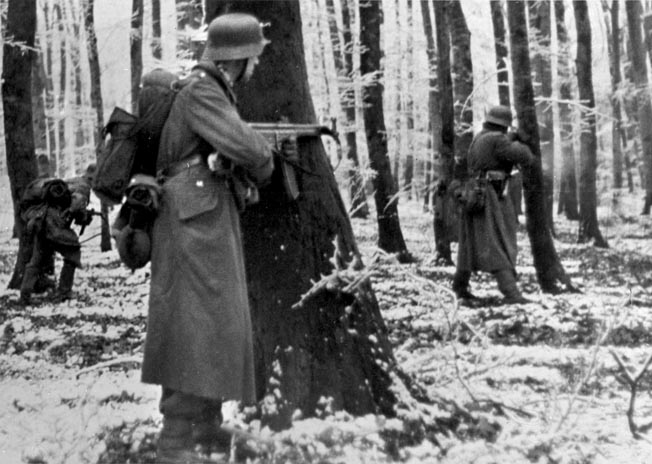
The division proceeded by night to the area around Kyllburg, with the last division echelons arriving on the night of December 15. A Luftwaffe liaison officer arrived at the command post, the first one attached to the division since the fight for St. Lô that July. Bayerlein had been told that the Wehrmacht attack would be preceded by Operation Goldregen (Gold Rain), a massive Luftwaffe bombing of the American battle lines. When questioned by Bayerlein about the number of aircraft assigned to Goldregen, the Luftwaffe officer had little information to relate. In the event, no large-scale German air support kicked off the offensive.
For the Ardennes Offensive, Panzer Lehr’s ultimate mission was to cross the Meuse River in the Givat-Dinant sector on the southern margin of Fifth Panzer Army. It was part of the XLVII Panzer Corps led by General der Panzertruppen Freiherr von Lüttwitz and included the 2nd Panzer and 26th Volksgrenadier Infantry Divisions.
Initially, the unit was to support the 26th Volksgrenadier Division in establishing bridgeheads over the Our and then the Clerf River near the Belgian towns of Gemund and Drauffeld, respectively. Once over the Clerf, Bayerlein was to head for the vital Ardennes crossroads town of Bastogne and then on to the Meuse at Dinant.
It was assumed Bastogne would be taken by a coup de main; if not, it was to be bypassed to the south and its capture would be the responsibility of the 26th Volksgrenadiers.
The terrain Panzer Lehr was to attack, and later to defend, alternated between deep, winding mountain valleys and long stretching high plains covered by large forests. Traveling through this ground made up of the curving, steep, and narrow mountain roads of the Eifel, even in dry weather, quickly took its toll on both vehicles and drivers and consumed an inordinate amount of fuel. The snow on the ground by mid-December 1944 only exacerbated a normally difficult situation for any force trying to transit the area.
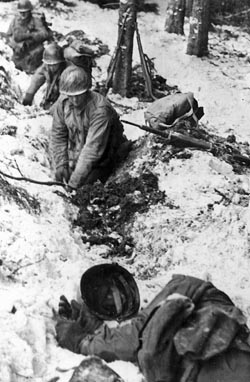
The American front line that Panzer Lehr was to penetrate ran along mountain road N7 directly behind the deep, rugged valley of the swollen Our River. From this valley only a few narrow roads ran along the serpentine slope referred to by the Americans as “Skyline Drive.” The roads were not passable for tanks, and the elevated ground on Skyline Drive afforded a defender good observation to bring down devastating artillery on any attacker.
The valleys located behind the Clerf River and the town of Wiltz were flatter and easier to traverse. To the west rose rich farm hill country sloping gently to the Moselle and Meuse Rivers’ watershed near Bastogne and then, playing out into a long depression suitable for tanks, up to the Meuse River.
This depression was broken by the flat valleys of the Ourthe, L’Homme, and Lesse Rivers, all rather wide and presenting a significant obstacle to any east-west movement. Like the roads, the terrain that Panzer Lehr, and all of Fifth Panzer Army, had to contend with ran from northeast to southwest. There were no suitable east-west thoroughfares in the zone of operations.
Barring Panzer Lehr’s path to the Meuse was the U.S. 28th Infantry Division under the command of Maj. Gen. Norman D. Cota. The 28th, nicknamed the “Bloody Bucket” Division, held a front in the Ardennes of about 15 miles and was squeezed between the U.S. 106th Infantry Division to its north (left) and the U.S. 4th Infantry Division on its south (right).
Combat Command A, U.S. 9th Armored Division, supported the 28th and was located a little to the infantry unit’s right flank. These three infantry and one armored division made up the VIII Corps of the U.S. First Army, commanded by Maj. Gen. Troy Middleton. The corps’ total frontage in the Ardennes was about 85 miles long.
The 28th Division’s three infantry regiments were all on line, with the 112th on the division’s northern flank, the 110th in the center, and the 109th anchoring its southern margin.
Formed from a Pennsylvania-based National Guard unit, the 28th Infantry Division had been badly chewed up in the fall 1944 fighting in the Hürtgen Forest. Rotated to the “quiet” Ardennes sector, the division was undergoing training and receiving replacements of men and weapons, as well as taking a well-deserved rest, when the Germans struck in mid-December.
The Panzer Lehr, which fought in the last great German offensive in the West in World War II, was a mere shadow of the military formation that had entered combat in Normandy six months before. Relieved from the front line in the Saar region (French Alsace) on December 5, 1944, the unit made seven night marches to the area of Cochem on the Moselle River, about 40 miles southwest of the city of Koblenz. There, between December 10 and 12, it received needed reinforcements in the form of 600 panzergrenadiers, some transport, tanks, and guns. In December 1944, the unit fielded about 9,000 troops—both combat and support troops.
On paper the division had 63 panzers, an impressive number of tanks compared to the armored fighting vehicles found in the vast majority of other panzer divisions currently in the Wehrmacht’s order of battle. However, the panzer regiment had only one mixed tank battalion made up of Mk. Vs and Mk. IVs, instead of one each of Mk. V Panthers and another with Mk. IV tanks.
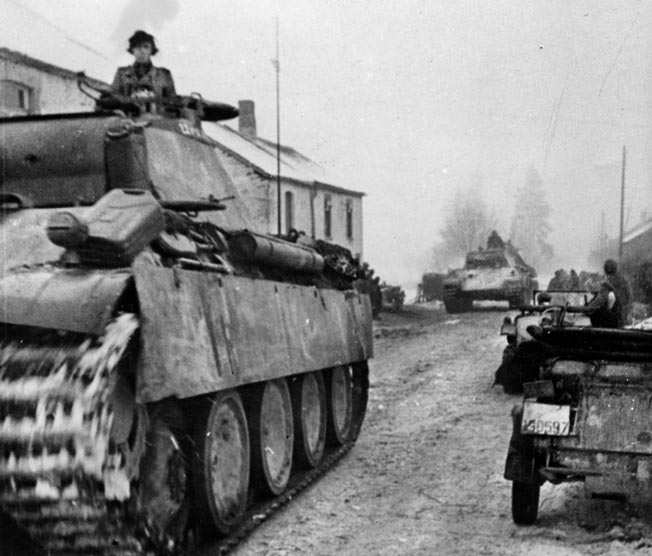
Its battalion of Panthers was fighting in Hungary, and in its place the 559th Heavy Panzerjäger Battalion, equipped with self-propelled Jagdpanther antitank guns, was attached. As it turned out, this substitute unit did not join the division until after Christmas 1944. Not so the promised 243rd Assault Gun Brigade, which never joined the division at all. Worse yet, the actual number of operational tanks as of December 12, 1944, stood at 23 Panthers out of 29 on hand; and 30 out of 34 Mk. IVs.
The division had 15 Panzerjäger 40s (14 in working order), but its Panzer Lehr Panzerjäger Battalion had the drawback of also having an antitank company comprised of towed, unarmored 75mm weapons. Panzer Lehr’s antiaircraft assets were pitiful at the start of the Ardennes attack with only four 88mm flak guns and two 20mm antiaircraft guns serviceable.
The shortages in manpower were partially made up for by the incorporation of young and enthusiastic new recruits and far less contented former Luftwaffe personnel. For the most part, the four battalions of panzergrenadiers were partially motorized with armored personnel carriers, but due to a lack of gun-mounted half-tracks and infantry support guns, the infantry lacked its former firepower.
The division’s armored artillery regiment was “armored” in name only. In mid-December 1944, it consisted of only two instead of three battalions: a light battalion of mostly 75mm weapons and a two-battery mixed (nine guns) 105mm and 155mm howitzer battalion. Since there were not enough prime movers, all of the unit’s artillery could not be repositioned at any one time. The division’s supply services were in even worse shape with a drastic lack of trucks to haul needed food, ammunition, weapons, and vehicle maintenance equipment.
Directly in the path of the advance of the German XLVII Panzer Corps was the American 28th Division’s 110th Infantry Regiment thinly stretched across a front of about 15 miles. The U.S. defense line was composed of squad-sized outposts stationed near the river, night patrols, and rifle companies bedded down in the villages near the ridgeline astride the five roads leading up from the river.
Divisional artillery was placed close to the front line to cover the regiment’s extensive frontage. The town of Marnach controlled the way from Clervaux to Bastogne, while Hosingen blocked the road from Drauffelt to Bastogne.
The XLVII Corps’ plan for the opening phase of the German offensive was for the 26th Volksgrenadier Division to establish crossings over the Our, followed by a rapid advance by the 2nd and Panzer Lehr Divisions to Bastogne. Marnach and Hosinger were to be directly attacked to open the two roads west to Bastogne, while other German forces infiltrated through the gaps between the other spread-out U.S positions.
To carry out his part of the plan, Bayerlein divided his command into three detachments: the Advance Detachment (primarily the divisional reconnaissance battalion), or Kampfgruppe von Fallios, composed of 15 Mk. IV panzers, one company of self-propelled antitank guns, four light howitzers, and one pioneer (combat engineers) company; Kampfgruppe 901 made up of five Mk. IV tanks, the 901st Panzergrenadier Infantry Regiment (two battalions), and the 2nd Battalion of the 130th Armored Artillery Regiment; and Kampfgruppe 902 formed by the 902nd Panzergrenadier Regiment (two battalions), with the 2nd Battalion of the Panzer Lehr Panzer Regiment (10 Mk. V Panther tanks).
In division reserve was a battalion of panzerjäger vehicles. Leading the entire effort would be two patrols of reconnaissance Puma armored cars that were to embark on “nuisance duty”—that is, to break through enemy lines and cause as much panic as possible in the enemy’s rear.
The Advance Detachment was initially tasked with supporting the 26th Volksgrenadiers in creating bridgeheads over the Our and Clerf Rivers, then moving rapidly to capture Bastogne. Kampfgruppen 901 and 902 were to cross at the Gemund bridge and then stand by to attack Bastogne. The divisional artillery would meanwhile take station east of the rivers and support with fire the efforts of the 26th Volksgrenadier Division. Bayerlein’s engineers were to build two 60-ton bridges over the targeted rivers as rapidly as possible.
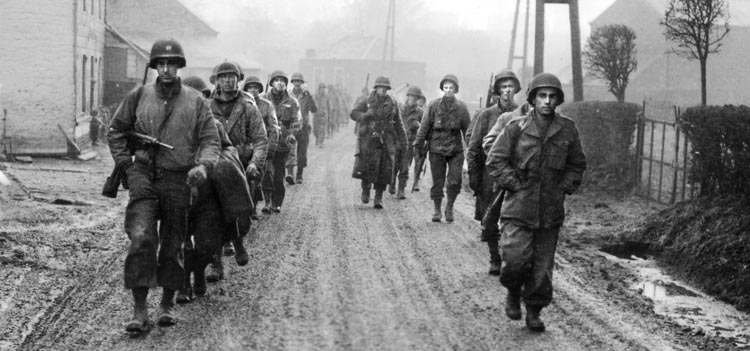
At 5:30 am, December 16, 1944, the Germans launched their last great offensive in the West. In the XLVII Corps sector, although greatly outnumbered, the American GIs fought stubbornly to deny the 2nd Panzer Division the vital avenue through Marnach and the critical route through Hosingen. Many of the infiltrating German units were tied down in bitter combat around isolated American outposts that could not be bypassed.
Strong river currents impeded the construction of the needed bridges, which were not completed until well into the afternoon of the 16th. Continuing American resistance at Hosingen denied the Advance Detachment the road to Drauffeld, resulting in the main body of Panzer Lehr being confined to the bridgehead for the entire first day of the offensive.
On the 17th, the division moved to the Our River under a heavy rain. Due to problems at the Gemund crossing site, the 902nd Kampfgruppe was diverted to the 2nd Panzer Division’s crossing point at Dasburg, passing over the Our late in the day.
Throughout the 17th, American troops continued to deny the Germans control of Skyline Drive—the ridge road positions leading west to Bastogne. Meanwhile, Hosingen did not fall until the morning of December 18, thus preventing the Advance Detachment from passing over the Clerf at Drauffeld.
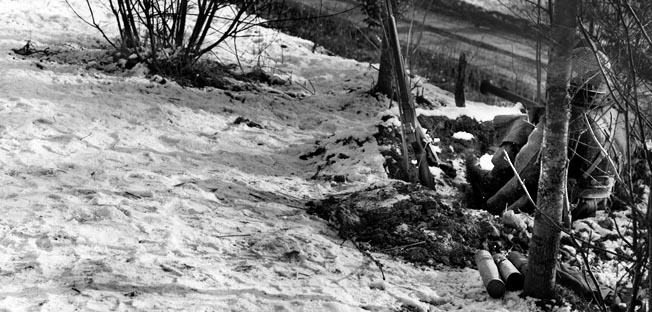
Hearing that new a crossing point over the Clerf had been captured near the village of Kautenbach, XLVII Corps ordered the Advance Detachment to head for that area and cross the Our there instead of at Drauffeld. However, Bayerlein’s lead component encountered stiff opposition at the village of Holzthum on the way to the Kautenbach crossing. The 26th Volksgrenadiers were not able to clear Holzthum of the enemy until late that night.
Through a mix-up in orders intending to expedite both the capture of Holzthum and at the same time return to the original plan to send elements of Panzer Lehr across the Our at Drauffeld, Panzer Lehr was fragmented during most of December 17, when it became engaged in three separate battles at three different locations. The result was that the command made no westward headway for most of the 17th.
With the fall of Hosingen on December 18, the paths to Bastogne for Panzer Lehr and the 26th Volksgrenadier Divisions were finally open. But, the day before Lüttwitz had learned that American reinforcements from the 82nd and 101st Airborne Divisions were on their way to Bastogne.
The delay the Americans had handed the Germans during the first two days of the great attack now threatened not only to deny the critical road junction of Bastogne to the Wehrmacht, but the hope of reaching the Meuse as well. Lüttwitz ordered an immediate advance on Bastogne: 2nd Panzer was to bypass the town to its north, while Panzer Lehr and the 26th Volksgrenadiers moved on it directly.
Throughout the morning hours of December 18, Panzer Lehr’s Advance Detachment and its Kampfgruppe 902 struggled to combine at Eschweiler and move on Bastogne. Kampfgruppe 901 continued to fight at the town of Consthum, 13 miles southeast of Bastogne.
Just south of Eschweiler, 15 miles east of Bastogne, Panzer Lehr’s reconnaissance battalion, part of the Advance Detachment, encountered fleeing Americans and captured eight U.S. half-tracks and four tank destroyers. Moving on after the brush with the GIs at Eschweiler, the Kampfgruppe 902, followed by the Advance Detachment, reached Nieder-Wampach, only about eight miles due east of Bastogne.
Corps orders for December 19 were that Panzer Lehr was to advance on Bastogne from the east and, if possible, push west that same day. The 26th Volksgrenadier Division was to move on Panzer Lehr’s right and enter Bastogne from the north. Lüttwitz, concerned about the muddy conditions, suggested to Bayerlein that he move on Bastogne via the more distant but solid road through the village of Bras.
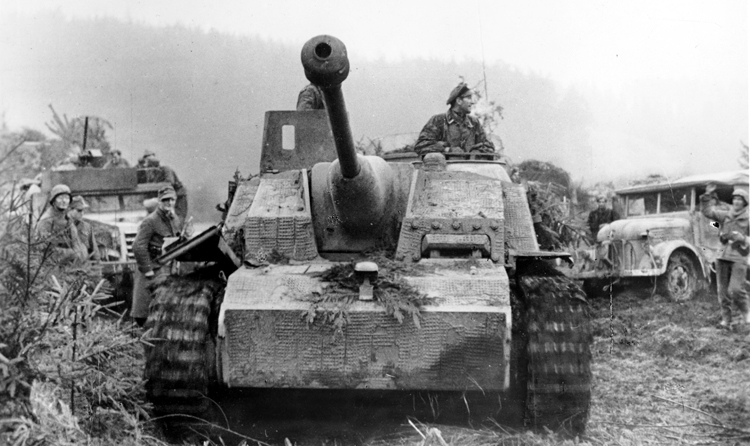
Assured by Belgian civilians that the shorter and more direct side road through Benonchamps to Mageret was suitable for armor, Bayerlein took their advice and found to his dismay the route was terrible; it cost him precious time. Nevertheless, meeting no enemy resistance, his men entered Mageret at 2 am on the 19th, capturing a U.S. medical team stationed there. Panzer Lehr was only four miles from its coveted target.
In Mageret, Bayerlein received more erroneous news from the local populace. He was warned that an American armored column, led by a major general, made up of 50 tanks and other fighting vehicles, had passed through town just two hours earlier. The force referred to was, in fact, Captain Willis B. Ryerson’s much smaller detachment from Combat Command B, 10th U.S. Armored Division. Taking counsel of his fears, Bayerlein worried that enemy tanks were now on the Longvilly Road between him and the main body of the German Army.
At 5: 30 am, after securing his rear by stationing three tanks, some infantry, and laying a few mines in Mageret, Bayerlein led his Advance Detachment into Neffe, located a little over three miles directly east of Bastogne. A half hour later in dense fog, the Germans probed Neffe with a few tanks and two platoons of infantry.
The move resulted in contact with an American road-blocking force known as Team Cherry. During the clearing of Neffe, the Germans lost one panzer to mines while claiming the destruction of two American tanks and the capture of several wheeled vehicles.
With Neffe allegedly free of the enemy, the Germans soon started to move toward Bastogne. Then the German column was hit by Yank paratroopers from the approaching 1st and 2nd Battalions, 501st Parachute Regiment, 101st Airborne Division.
The German Landsers stopped in their tracks, and the German armor refused to go forward without infantry support. Then American 105mm howitzers began to hammer Neffe. To Bayerlein, the U.S. artillery fire sounded like tank gunfire, and he was convinced he was now faced with enemy armor.
Adding to the German division leader’s concerns was the fact that Neffe was not empty of the enemy. All day on the 19th, Lt. Col. Henry Cherry had held out against the Germans in a chateau just south of Neffe proper. At the same time, U.S. tanks, part of Combat Command Reserve, 9th Armored Division, which had been withdrawing from Longvilly, almost eight miles northeast of Bastogne, were attacking his small force at Mageret while the 2nd Battalion, 501st Parachute Regiment had been battling parts of the 26th Volksgrenadier Division between Mageret and Neffe.
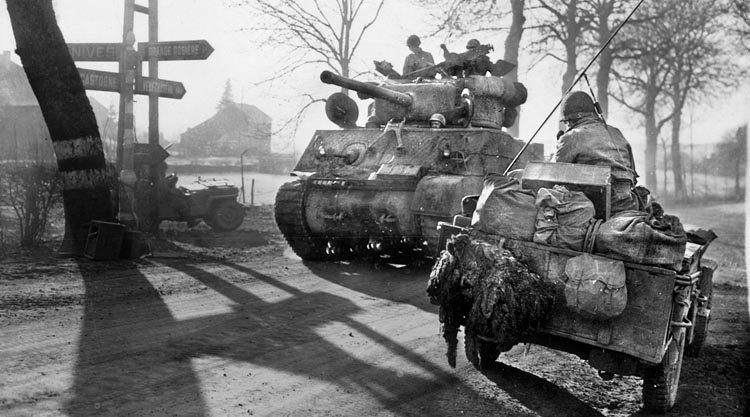
To Bayerlein, it must have seemed that he and his men were surrounded by an unknown number of Americans. To add to the general’s problems, he had been slightly wounded by a shell fragment during the fighting at Neffe.
The march from Longvilly by Combat Command Reserve, 9th Armored Division, had come to the attention of the leadership of XLVII Panzer Corps, as well as the commanders of its subordinate formations.
Elements of the 2nd Panzer and the 26th Volksgrenadier Divisions independently struck the American tank column from the east and southeast, respectively. Joining them from the west and heading east, Bayerlein, like the commanders of the other two German units, did not know their corps comrades were attacking CCR. He launched an assault with 20 tank destroyers and two companies of panzergrenadiers.
The result was awful carnage to the U.S. tank force strung out on the congested Longvilly-Mageret road. Another result was that the slaughter of CCR diverted German attention and strength from Bastogne, thus giving the Americans more time to prepare to deny it to XLVII Corps.
As Combat Command Reserve died during the morning of December 19, Panzer Lehr’s Advance Detachment was ordered to strike at Bastogne from the south along the Wardin-Marvie axis. Entering Wardin at 1 pm, the detachment’s advance guard—made up of tanks and artillery in support—clashed with Company I, 3rd Battalion, 501st Parachute Regiment. By evening, after bitter house-to-house fighting, the paratroopers were forced out of the town, but the Germans were too exhausted to proceed to Marvie.
Pulling back to the high ground near the town of Bizory, the 501st Parachute Regiment, commanded by Lt. Col. Julian J. Ewell, remained there for the balance of the battle for Bastogne. That same day, Bayerlein urged Lüttwitz to throw the entire weight of his XLVII Corps against the defenders of Bastogne. He argued that the place was critical as a transportation/communication hub and supply line for the Germans heading for the Meuse.
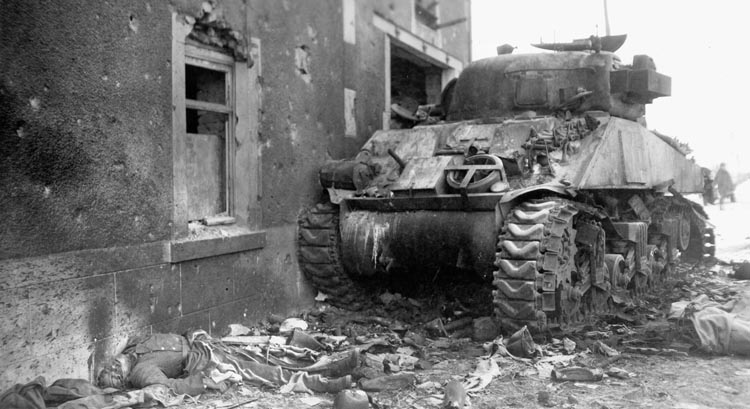
Further, the capture of Bastogne would not only eliminate an enemy force in the Germans’ rear as the army advanced to the Meuse, it would also alleviate the need to tie up friendly forces required to contain the enemy garrison holed up in Bastogne.
Bayerlein’s reasoning was sound, and Lüttwitz agreed, but Manteuffel had other ideas. To him—and, more importantly, to Hitler—the advance to the Meuse was paramount. Therefore, the Fifth Panzer Army leader decreed that all efforts and resources must be directed to that end.
While the bulk of Fifth Panzer Army swept toward the Meuse, the 2nd Panzer Division would bypass Bastogne to the north while the 26th Volksgrenadier Division attacked it from the north and Panzer Lehr attacked from the east.
But the December 19 attacks by Panzer Lehr and the 26th Volksgrenadier Division failed, as they did again on the 20th. On the 21st, Bayerlein was directed to leave his Kampfgruppe 901 to aid the 26th Volksgrenadier Division at Bastogne and move the rest of his unit west to the Meuse as quickly as possible.
On December 21, the Advance Detachment reached Tillet, 12 miles due west of Bastogne, where it captured an American supply column of 80 trucks and surrounded two batteries (eight self-propelled howitzers) of the U.S. 58th Armored Field Artillery Battalion, which had been withdrawing from Longvilly after supporting the retreat of CCR, 9th Armored Division on December 19. By the 22nd, the American artillerists had lost all but one of their pieces and scattered in small groups to reach Bastogne and safety.
Back at Bastogne, the 901st teamed up with the 39th Infantry Regiment, 26th Volksgrenadier Division to tighten the ring around the town on December 22. Between December 23 and 24, heavy fighting occurred involving the 901st as it sought to take the town of Marvie just three miles southeast of Bastogne.
While Kampfgruppe 901 slogged it out at Bastogne, the rest of Panzer Lehr reached St. Hubert on December 22, and then Rochefort the next day. Pressure from Lt. Gen. George S. Patton, Jr.’s U.S. Third Army, coming up from the south to relieve Bastogne, was already adversely affecting Panzer Lehr’s overextended supply lines.
Defending the city was the U.S. 3rd Infantry Battalion, 335th Infantry Regiment, 84th Infantry Division, supported by two platoons of 57mm antitank guns, a platoon of the 309th Combat Engineer Battalion, a platoon of the 638th Tank Destroyer Battalion, and a platoon of the 29th Infantry Regiment.
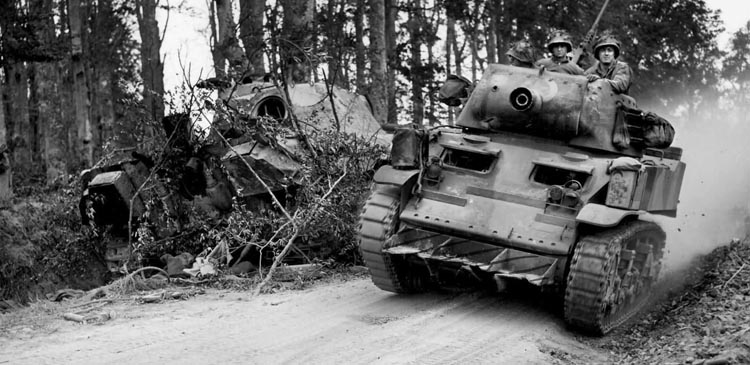
Unaware that the city was defended, Bayerlein sent his Kampfgruppe 902 through a defile between two towering hills. Receiving enemy fire, Bayerlein withdrew his men, sent a tank unit behind the town to cut it off, and delivered a night attack. After a costly house-to-house battle, the Americans withdrew from Rochefort having done what they set out to do: delay the German advance to the important transportation hub at the town of Marche.
After taking Rochefort, nothing lay between Panzer Lehr and the Meuse except for a battalion of infantry from the 84th Infantry Division stationed in the Lesse River Valley. That unit soon departed from the area on the night of the 23rd. The Meuse at Dinant was only 19 miles away.
By December 23, the 2nd Panzer Division had bypassed Marche to the south and was in danger of being cut off and destroyed by the gathering American forces in the Hotton-Marche area. For the next several days, Panzer Lehr’s actions in the Battle of the Bulge were completely guided by the German attempt to succor the 2nd Panzer Division.
On the morning of December 24, the lead elements of the 2nd Panzer Division (nicknamed the Vienna Division for the city in which it was organized), i.e. its reconnaissance battalion, reached the village of Celles just six miles from Dinant.
At about the same time, Combat Command B, U.S. 2nd Armored Division, arrived at Ciney, six miles northeast of Celles. In addition, Combat Command A from the same American armored division moved toward Rochefort, crossing the rear of 2nd Panzer as it did so. By early afternoon, the main body of the 2nd Panzer Division was blocked from moving farther west, while its reconnaissance battalion and one of its kampfgruppen—both within two miles of Celles, but still separated from each other—were cut off from the rest of the division.
Aware that part of 2nd Panzer was cut off, but not cognizant of the presence of the U.S. 2nd Armored Division, Lüttwitz, still hoping to reach the Meuse, on Christmas Day directed Bayerlein to capture the towns of Humain and Buissonville with his Advance Detachment.
If Bayerlein was successful, 2nd Panzer Division’s lines of communications would be restored and the best route to the Meuse would be made available for a continued German advance. Lastly, the bulk of the 2nd Panzer Division could then force its way to its cutoff sub- units near Celles. But it was not to be.
Back at Bastogne, Kampfgruppe 901 of Panzer Lehr held its lines south of the town against American probes while securing the Bastogne-Arlon highway to the south with a few tanks, mines, and downed trees.
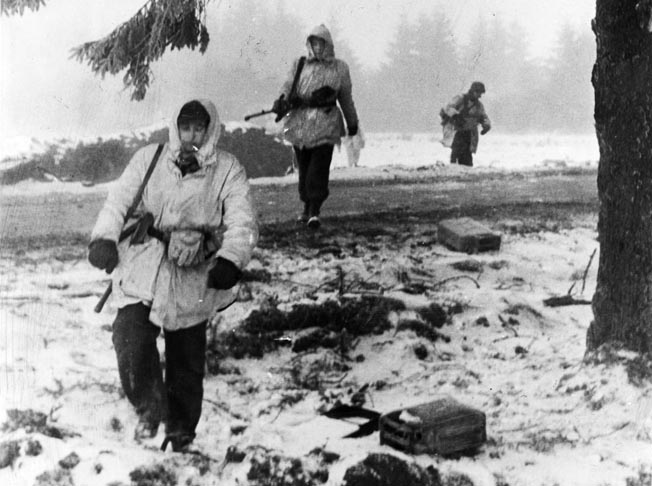
On Christmas Day, the 2nd Armored Division initiated a two-pronged attack to annihilate the German 2nd Panzer Division. Supported by a large contingent of air power, the unit’s Combat Command B converged on Celles from the southwest, destroying Kampfgruppe Cochenhausen. At the same time, its 82nd Reconnaissance Battalion, aided by the British 29th Tank Brigade, attacked 2nd Panzer’s reconnaissance battalion and artillery contingent, eliminating it as a combat force.
As the American tankers gunned down their German counterparts near Celles, Combat Command A, 2nd Armored Division, denied Humain and Buissonville to the Germans. The German defeat in the Celles pocket marked the end of the Fifth Army’s drive to the Meuse.
With its attempt to save its sister armored division frustrated, Panzer Lehr on December 26 was removed to the town of Remagne west of Bastogne. No longer strong enough to deliver effective attacks, the unit held a sector of the German ring encircling Bastogne for the next several weeks.
Farther east, around the beleaguered town of Bastogne, the 901st combat group was attached to the 167th Volksgrenadier Infantry Division now responsible for the area south of the Wiltz River. In an unsuccessful December 29 attack to sever the newly opened supply route into Bastogne made by the U.S. 4th Armored Division three days earlier, a panzer company of the 901st was badly mauled.
On December 30, 1944, the Americans and Germans simultaneously launched attacks, the former’s objective to drive the Germans farther away from Bastogne, the latter hoping to restore a blockade around the town and finally capture it.
Attack and counterattack went on from December 30, 1944, until the Americans were able to reestablish a solid front again connecting the First and Third Armies on January 16, 1945, with the capture of the town of Houffalize, 14 miles northeast of Bastogne. Part of this furious action took place in the zone now held by the 901st battle force: the Wardin-Mageret road.
On January 2, 1945, the GIs attacked in the area but were forced back by a German counterattack made in a snowstorm on the 3rd. On the 6th, the 901st, now only about 100 men strong with five tanks, was ordered out of the lines and moved to rejoin Panzer Lehr’s main body, reaching it on January 8.
Meanwhile, starting on January 8, 1945, Hitler allowed a phased withdrawal from the bulge in the American lines created by the surprise Ardennes onslaught. During this entire retrograde movement, which ended with the German Army crossing to the east bank of the Our River, Panzer Lehr played a prominent part as rear guard.
The division’s own rearguard unit fell back across the river on January 26, ending its participation in the Ardennes Offensive. Bayerlein was relieved of command of the division and “bumped upstairs” to take charge of LIII Army Corps, a role he maintained until surrendering to the Americans in the Ruhr Pocket on April 19, 1945.
Forced to fall back, Bayerlein’s former division, under new commanders, moved into the northern Rhineland area to defend against thrusts by the British Eighth Army, where it continued to face heavy combat and suffer heavy losses. It was then sent to keep American troops from pouring across the Rhine over the Remagen Bridge. By the time the war ended, Panzer Lehr was an exhausted force reduced to just 300 men and 15 tanks.
